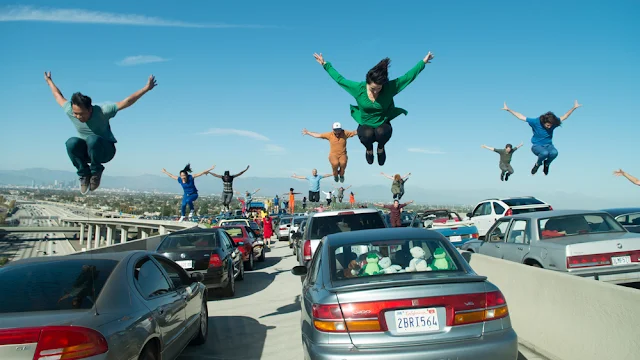 |
| Shima Iwashita and Shin'ichiro Mikami in Youth in Fury |
Yoko Katsura: Shima Iwashita
Setsuko Kitamura: Kayoko Honoo
Fumie Sono: Hizuro Takachiho
Seiichi Mizushima: Kazuya Kosaka
Michihiko Kihara: Junichiro Yamashita
Shizue: Yachiyo Otori
Oseto: Yunosuke Ito
Director: Masahiro Shinoda
Screenplay: Shuji Terayama
Based on a story by Eiji Shinba
Cinematography: Masao Kosugi
Film editing: Keiichi Uraoka
Music: Toru Takemitsu
Like the French New Wave directors, the Japanese also found themes and stories in the insurgent, rebellious post-World War II generation. But unlike such films as Jean-Luc Godard's Breathless (1960) and Bande à Part (1964) or François Truffaut's The 400 Blows (1959), the Japanese equivalents never quite caught on internationally. Perhaps it's because the French found a new approach to the material, where the Japanese directors were more directly inspired by the tone and technique of American movies like The Wild One (László Benedek, 1953) and Rebel Without a Cause (Nicholas Ray, 1955), which had a more moralistic or didactic tone, blaming the eruption of youthful rebellion on societal neglect. Even so shrewd a director as Nagisa Oshima, in his second feature, Cruel Story of Youth (1960), seems constrained to portray the departure of his young rebels from the old ways as shocking, whereas Godard and Truffaut relish their liberation from old moral norms. Youth in Fury (also known as Dry Lake) was also a second feature for Masahiro Shinoda, and it centers on young people caught up in the political revolt that culminated in student riots against the 1960 Japanese-American mutual security treaty. One of them is Takuya Shimojo, who is politically engaged but also confused -- he decorates his walls with pictures of political figures ranging from FDR to Hitler to Fidel Castro. Essentially he's a nihilist. He becomes involved with Yoko Katsura, whose father, a politician, has recently committed suicide, brought on by threats to expose his corruption. Her family is left penniless by his death, and with the consent of their mother, her older sister has agreed to sleep with a conservative politician who helps the family out with money. Eventually, Takuya's rejection of conventional morality will get him arrested: He hired a drunken boxer to beat up the man who had been engaged to Yoko's sister but jilted her after her father's suicide; instead the thug slashed the man's face with a razor. Yoko, the "nice girl," ends by being swept up in the crowds of students protesting the treaty. The problem with Youth in Fury is that it's overloaded with secondary characters, such as the rich young layabout who tries to rape Yoko, and Takuya's old girlfriend who resents his taking up with Yoko, as well as a group of politically engaged young idealists with whom Takuya first works but finally rejects. Shinoda has trouble sorting out and delineating these various characters, so that the film sometimes loses focus. But it's propelled by a good score by Toru Takemitsu -- like many films of its day, it relies more on jazz than on rock, which was just beginning to become the dominant musical idiom.








